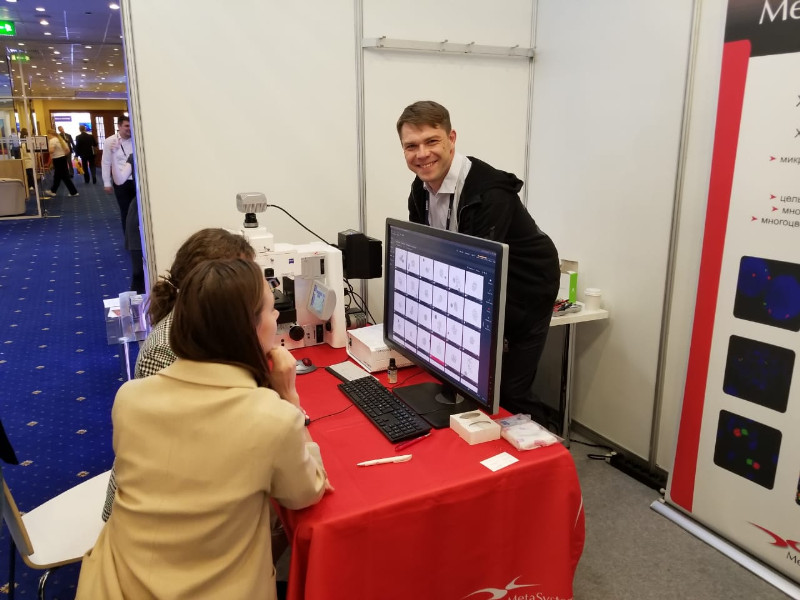About 100 guests from 36 countries met on the XVIII. MetaSystems Distributor Meeting (DM) in November to exchange experiences and to get to know new trends and developments at MetaSystems.
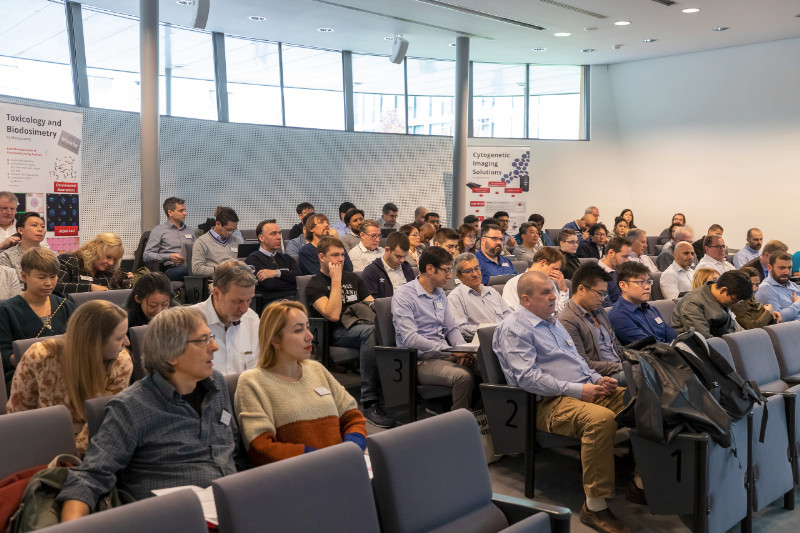
Our internet site may contain information that is not approved in all countries or regions. To ensure accuracy of content, please select your country/region of residence. Choose International if your country is not listed.
This information will be saved using cookies. To find out more about cookies, read our Privacy Policy.
Please select your country of residence. Choose International if your country is not listed.
Our internet site may contain information that is not approved in all countries or regions. To ensure accuracy of content, it is required that you select the site which is appropriate for your country of residence.
Based on your previous selection, you have been forwarded to the website for International.
MetaSystems Probes has already certified a large part of its portfolio, according to IVDR. For organizational reasons, we currently provide only the IVDD product.
Discover all IVDR-certified products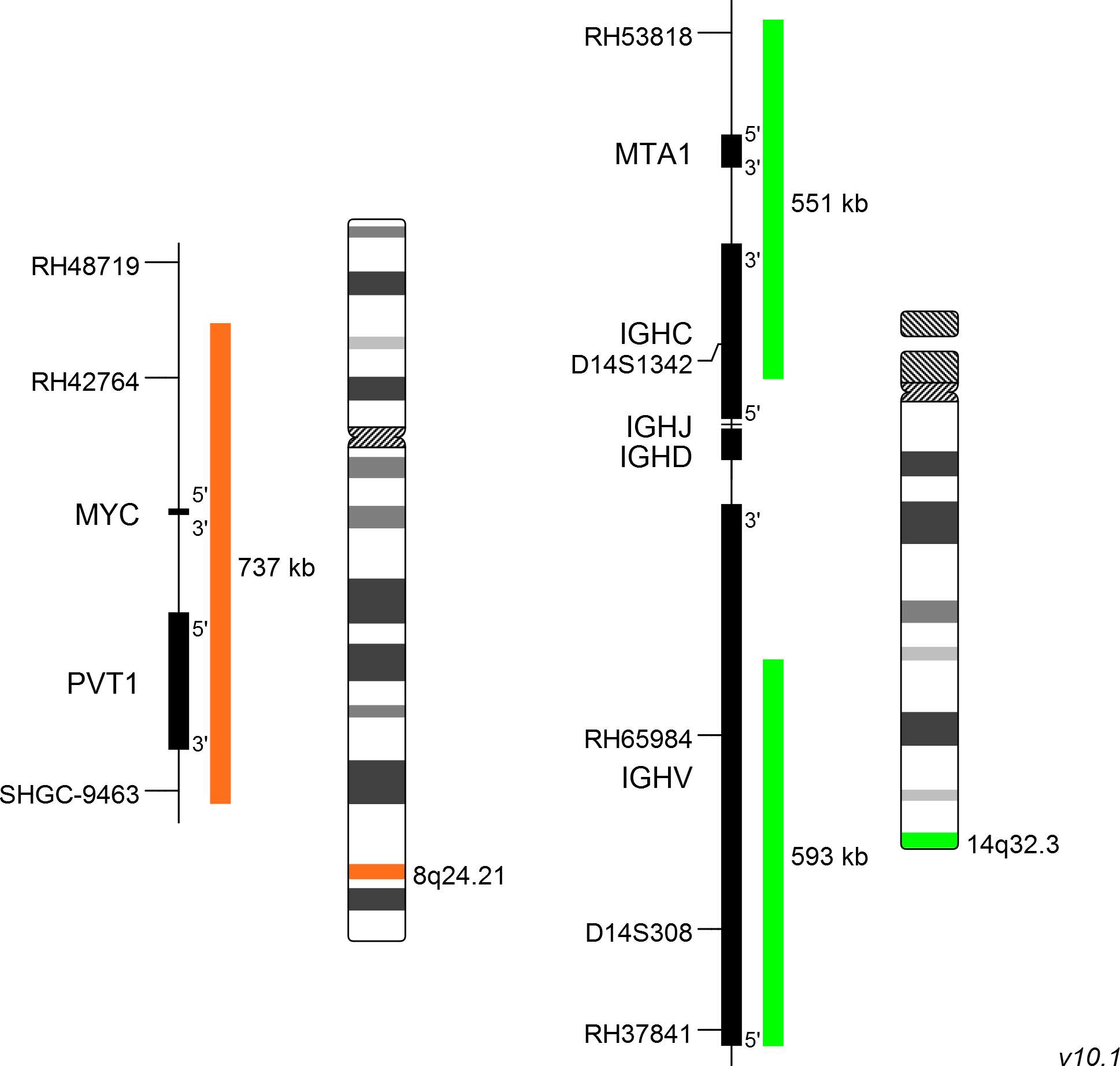
XL t(8;14) MYC/IGH DF consists of an orange-labeled probe hybridizing to the MYC gene region at 8q24.21 and a green-labeled probe hybridizing to the IGH gene region at 14q32.3.
Probe maps are created in accordance with the intended purpose of the product. Solid colored bars do not necessarily indicate that the probe fully covers the indicated genomic region. Therefore, caution is advised when interpreting results generated through off-label use. Probe map details based on UCSC Genome Browser GRCh37/hg19. Map components not to scale. Further information is available on request.
Chromosomal translocations involving the IGH locus are recurrent in many types of lymphomas. Burkitt lymphoma (BL) is a rare, but fast growing type of non-Hodgkin lymphoma (NHL). The translocation between the MYC gene locus at 8q24 and the immunoglobulin genes (IG) for the kappa light chain at 2p12 (IGK), for the heavy chain at 14q32 (IGH) or for the lambda light chain at 22q11 (IGL), juxtapose the MYC gene to an IG enhancer, resulting in overexpression of MYC. About 80% of BL patients show the MYC rearrangement t(8;14)(q24;q32) while approximately 10% show a translocation between the MYC gene region and IGK or IGL. Additional breakpoints in BCL2, BCL6 and CCND1 are indicators for an aggressive course and short overall survival.
MYC translocations are also present in other types of lymphomas such as diffuse large B-cell lymphoma (DLBCL), which is difficult to distinguish from BL by morphology and immunophenotype alone. The use of different techniques including FISH, genomic and cytogenetic profiling can provide additional information.
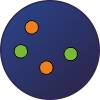
Normal Cell:
Two green (2G) and two orange (2O) signals.
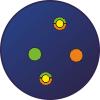
Aberrant Cell (typical results):
One green (1G), one orange (1O), and two green-orange colocalization/fusion signals (2GO) resulting from a reciprocal translocation between the relevant loci.
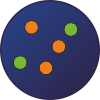
Aberrant Cell (typical results):
Two green (2G) and three orange (3O) signals resulting from a translocation between the orange labeled and an unknown chromosome.
Certificate of Analysis (CoA)
or go to CoA DatabaseNeon, the outstanding MetaSystems case and image management system, offers many tools and helpful gadgets to streamline routine workflows, for example in cytogenetics labs. The second MetaSystems User Day, addressed to MetaSystems clients from Germany, Austria, and Switzerland, provided in different workshops knowledge helping to unleash the full power of the system.
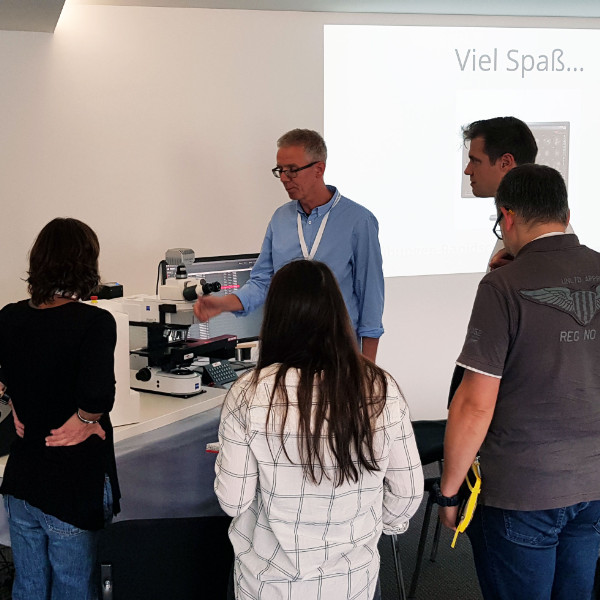
The Congress 'Genetics of XXI Century' in Moscow, Russia (May 2019) has been one of the most important events for the professional international community of geneticists. Our partner company in Russia OOO MetaSystems considered it a good occasion to present the new camera CoolCube 4 connected to a state-of-the-art Neon system to the public.
